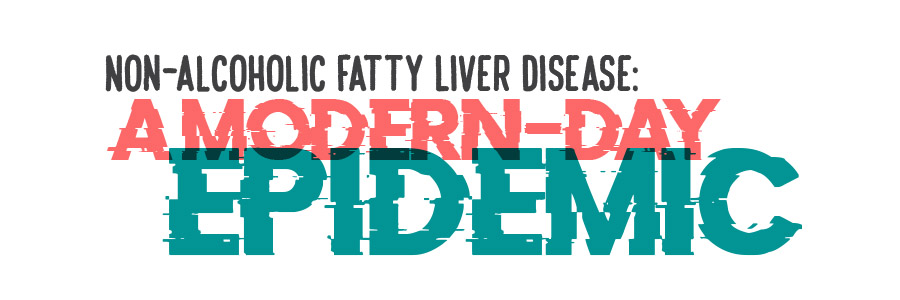


Sign-up for {N}power to get exclusive discounts, newsletters, members-only features, and more!


Have you heard of foie gras? Considered a culinary delight by some, abhorred by many, it is made by force feeding corn to ducks or geese, which grossly fattens their livers. Translated to English, it literally means “fat liver” (sounds nicer in French, doesn’t it?), and the condition is not restricted to French ducks. According to the National Institutes of Health, up to 40 percent of American adults are walking around with fatty livers, and research suggests that nearly 10 percent of children from ages two to 19 have fatty livers, making it the most common form of liver disease in children.i ii iii
Known in the medical community as non-alcoholic fatty liver disease (NAFLD), it is a condition in which fat accumulates in the liver and is generally driven by a high sugar and refi ned-carb diet rather than excessive alcohol consumption. Rates are steadily increasing and it has become the most common cause of chronic liver disease in the United States.iv In some people NAFLD can develop into non-alcoholic steatohepatitis (NASH), in which inflammation and liver cell damage is also present. This can progress to scarring of the liver (fibrosis), cirrhosis (permanent scarring and hardening of the liver), and liver cancer. It is estimated that about 20 percent of people with NAFLD have NASH.v
NAFLD is closely associated with obesity, insulin resistance, metabolic syndrome, type-2 diabetes, and high triglycerides and/or LDL cholesterol, which has led researchers to call it the “liver manifestation” of metabolic syndrome.vi In the U.S., rates of obesity vii closely parallel rates of NAFLD, and cardiovascular disease is the most common cause of death in people with NAFLD.viii As you can see, all of these conditions are deeply intertwined.
The good news is that you can control and even reverse fatty liver, starting with diet. A diet that includes a healthy balance of protein, healthy fat, and an abundance of vegetables is critical for not only controlling fatty liver disease, but for maintaining a healthy weight, healthy blood sugar and insulin levels, healthy triglycerides, and a healthy ratio of LDL: HDL cholesterol. One of the most important things you can do is strictly limit sugar consumption and completely avoid high-fructose corn syrup, which has been directly implicated in the development of fatty liver.ix x xi It’s also important to limit your consumption of deep fried foods, which usually contain trans fats and contribute to unhealthy triglyceride and cholesterol levels.

The plant compound berberine is uniquely suited to tackle the cluster of symptoms that often accompany NAFLD, including insulin resistance, high blood sugar, and high triglycerides; studies have consistently found that berberine reduces triglycerides, LDL cholesterol, and fasting blood sugar, improves insulin resistance, and reduces fat in the livers, while also improving liver function, in NAFLD patients.xii A recent randomized, controlled trial including 184 patients with NAFLD compared lifestyle intervention (diet and exercise), lifestyle intervention plus pioglitazone (a diabetic drug, that should be noted, can cause or worsen heart failure), or lifestyle intervention plus berberine (500 mg, three times daily). Lifestyle intervention plus berberine resulted in a signifi cant reduction in liver fat (57% compared to 36% in the lifestyle intervention group), a “remarkable” decrease in body weight, and better reductions in blood glucose, triglycerides, and cholesterol. Berberine was more effective than the drug in reducing body weight and improving triglyceride levels.xiii Research has found that the liver contains the highest concentration of berberine metabolites (the breakdown products of berberine), containing about 70 times as much as what is found in the plasma.xiv
Choline is an essential nutrient (i.e., our bodies can’t make it) often grouped with the B vitamins. It is required to make phosphatidylcholine, which is needed to move fat out of the liver, and research has shown that humans deprived of choline develop fatty liver and liver damage. Choline is also an important component of cell and mitochondrial membranes, where it maintains structural integrity. Mitochondrial dysfunction is connected to the development of NAFLD, and research has suggested that the pathogenesis of NAFLD to fibrosis to cirrhosis, and eventually to liver cancer is in part a result of cholinedeficient liver cells overproducing free radicals because of “leaky” mitochondria, leading to oxidative damage, inflammation, and DNA damage in the liver.xv The richest food sources of choline are egg yolks and liver,xvi two incredibly nutrient-dense foods that a lot of people avoid; eggs, because they have been wrongly demonized for their cholesterol and saturated fat content, and liver, because, well, liver. Choline intakes among older children, men, women, and pregnant women have been found to be far below the adequate intake.xvii Most B-complex vitamins contain small amounts of choline, but you can find larger concentrations in krill oil,xviii alpha GPC,xix and lecithin.xx Phosphatidylcholine supplements are also available. The daily recommended intake for choline is 425 mg for women 19 and older and 550 mg for men 19 and older.xxi
Milk thistle’s claim to fame is supporting liver health, so it’s no surprise that this herb has proven to be valuable in halting the progression of fatty liver disease. Silymarin, one of the main constituents in milk thistle, has both anti-inflammatory and antioxidant properties; this is particularly helpful in NAFLD and NASH, as inflammation and oxidative damage are intricately linked to the progression of liver damage.xxii Additionally, both animal and human studies have shown that silymarin improves liver function in cases of NAFLD, can reduce fibrosis, the thickening and scarring of the liver tissue, improve insulin resistance, reduce fat accumulation in the liver, and improve mitochondrial function.xxiii xxiv xxv Research has also found that milk thistle taken in combination with phosphatidylcholine improves bioavailability to the liver.xxvi Studies have used an average dose of 200 mg of silymarin, two to three times daily. While NAFLD has become a modern-day epidemic, the good news is that it is treatable, and even reversible, with lifestyle modifi cations including diet and exercise, and dietary supplementation. The supplements discussed in this article are backed by solid research and have all shown efficacy in improving a number of factors involved in the development and progression of NAFLD, including metabolic factors such as insulin resistance, triglyceride levels, and mitochondrial function. There is never a better time than the present to start taking care of yourself, and your liver!



Sign-up for {N}power to get exclusive discounts, newsletters, members-only features, and more!